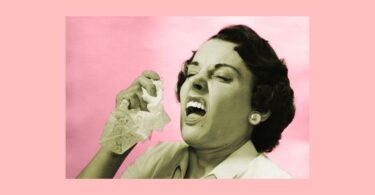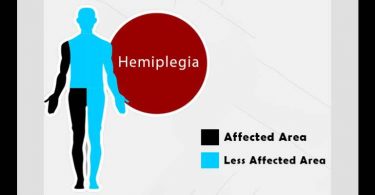A young girl, aged seven, sought treatment for recurrent abdominal pain caused due to mesenteric lymphadenopathy (reports attached). Patient was on allopathic painkillers and had been given antibiotics whenever pain was severe, however relief was temporary.
She was also suffering from –
- nocturnal enuresis,
- knee pains occasionally (Xray and rheumatology reports normal)
- had severe constipation
- coughing and breathlessness on playing too much (F/H/O – asthma).
- Her immunity was low and she suffered from frequent upper respiratory tract infections.
I start all my cases with the Case Witnessing Process (CWP) and specially the paediatric cases. It can be easy to get lost in the myriad symptoms children give, and the Case Witnessing Process (used here) can add to the surety of the prescription. It consists of three steps – the Passive Case Witnessing Process, the Active and the Active-Active Case Witnessing process.
I start with the Passive Case Witnessing Process, where I give her free space and time and allow her to express spontaneously whatever comes up in the moment. Along with noting the peculiar and characteristic verbal expressions, I also observe the non-verbal body language.
(Case has been edited for brevity.)
Passive Case Witnessing Process (PCWP) –
D: Tell me something about you?
P: (long pause)….what should I tell..?
D: Anything, about yourself?
P: There is nothing to tell (another long pause)
(Observation – Patient fidgety, moving about in chair, biting fingernails.
The patient was not talking much in spite of giving her ample time, hence I direct her to different areas, like fears, dreams, interests and hobbies etc. to see what is coming up. This process is known as the Guided PCWP. Here I ask broad ended questions in specific areas.)
Guided PCWP –
Area hobbies –
D: Ok, tell me something about your hobbies? What do you like to do?
P: I like to draw… And I also like English and Maths. … I like to draw…and I also like to do craft. I like to draw peacock and sun and shapes… And heart and star…
(Again, nothing significant in this area, so I ask her about her fears)
Area fears –
D: Ok, tell me your fears? What are you scared of?
P: Bhoot! Ghost will come and eat me! And also elephant, camel, tiger, lion, giraffe, zebra…But cats and dogs I like to have as pets. They are my favourite animals.
D: Ok and which other?
P: Only this… ghost fear is there…
D: Tell one more?
P: Spirit .. it follows you home and eats you up. In school, I am scared of my Sir, he hits us if we misbehave. And I am scared of thieves, they come and take us away, kidnap us. To whom are you going to show this recording?
D: No one….why?
P: Just asking…
Area dreams –
D: Ok and tell me what dreams you get?
P: Ghost… it holds my legs and drags me…and eats me…
D: Ok, tell more about this ghost?
P: It pulls me, drags me and takes me away. It will eat me.
D: And what else it does?
P: Only this much…
Area ambitions –
D: And what do you want to become after you grow up?
P: Don’t know, doctor, teacher…maybe work in office
D: Tell more about that?
P: Office people get money… will take and give to mother. Only this much…
Area school –
D: And tell something about your school? What do you do there?
P: Those people hit me, they sharpen the pencil and poke me, they poke me with a needle…
D: Why do they do that?
P: They are bad people
Does the voice go out of the consultation room?
D: No…
(I now explore her chief complaint area to get the particulars, modalities, concomitants etc.)
Area chief complaint –
D: Tell me about your stomach pain? What happens to you exactly?
P: It starts paining here (umbilical region)….and it is as somebody is pulling something… pain is very severe, when it happens… it doesn’t happen daily, only sometimes… (Frequency once or twice in 8 days – mentioned by the mother.)
(She wasn’t able to describe her pain beyond this, in terms of modalities or concomitants)
At the end of PCWP, we note –
- Focus – not very clear, though pulling has come up in her dreams and chief complaint areas.
- Level of experience – Higher, since she is qualifying her fears, plus some qualified perceptions are surfacing. Hence the potency will be 1M.
- Whether patient is in touch? Yes, as she is speaking spontaneously without any defenses
- Body language – fidgety; also her questions – to whom you will show the recording, does the voice go out of the consultation room – are peculiar.
I now consider ‘pulling’ as the focus and start the Active Case-Witnessing Process. Here I ask specific questions about the focus and see where she goes.
Active CWP with focus –
D: So tell me about this ghost dream? How he pulls?
P: Ghost will come…I am very scared, he pulls my leg and drags me to his house…
I take a blanket over my head when I sleep, ghost will come and eat me otherwise…
D: Hmm, tell more about this?
P: Only this much I know… we should kill the ghost…
D: And what does the ghost look like?
P: It is dark and scary and I don’t remember much…
(Now in this case, the patient is not going further and hence we cannot go towards the Active-Active Case Witnessing Process. Often, inspite of going through different areas, we don’t get a clear focus or even if we get the focus, the patient is not able to describe it further and we cannot go towards the patient’s centre.
So what do we do in these type of cases? My approach has been to stick to the physical generals and particulars and repertorize the symptoms. In this case, since it was a paediatric case, I could rely on the mother’s observations. I called the mother and asked her to share her input.
At this pont, however, we do have soft hints about the Kingdom from which we need to select the remedy.)
Mother’s observations –
- Very offensive urine odour
- When knees pain, she acts out a lot, banging and thrashing her legs, moans and cries
- Lot of complaints from school – she pinches others, hits them, kicks others
- Very stubborn
- Answers back with rudeness
- Lot of anger towards her younger sister
- As a baby used to cry a lot, her face used to become bluish, made her body stiff
- Hyperactive
Physical Generals –
- Cravings – sweet
- Aversion – spicy
- Thermals – Hot
The patient’s characteristic symptoms are –
- Pain as if somebody is pulling something,
- Dreams of ghost pulling her and dragging her away
- Fear (and dreams) of being eaten by ghost, fear of being kidnapped, being hit
- They are bad people and so they poke me
- ‘To whom you will show the recording, does the voice go out of the consultation room’ , plus her hesitation to express – (wanting to hide/ cover up?)
- ‘Acting out, thrashing legs with pain’ – (? hysterical )
- Hyperactive
- Pinching and hitting others
- Hatred towards sister
These pointed towards the Animal kingdom where there is a feeling of somebody doing something to you; and along with her mischief and hyperactivity, the Arachnidae group seemed to be indicated.
Let us see what comes up in the repertory. The rubrics I took for repertorization were-
- Generalities; Food and drinks; sweets, dainties, delicacies; desire
- Generalities; Food and drinks; spiced, highly seasoned or flavored food;aversion
- Urine; Odour; offensive
- Extremities; Pain; knee
- Abdomen; Pain;g lands
- Mind; Feigning;sick
- Mind; Hysteria
- Mind; Hide; things, desire to, cover up
- Mind; Activity; hyperactive
Even without applying any filter, the first remedy which came up was Tarent h.
Remedy given Tarent hisp 1M, one dose daily for three consecutive days and placebo for 21 days.
My learning in this case – a case may need two approaches simultaneously and as a homeopathic physician we have to be alert and flexible to recognize the individualistic approach a case might need. In this case through the CWP I could see one aspect of the patient whereas the repertorization gave me surety about my prescription.
1st Follow-up –
Fear of thieves reduced, dreams of ghosts still there. Knee pain intensity less. Abdominal pain occasionally. Constipation slightly better. Urine complaints SQ. Mischief much less.
Tarent hisp 1M doses were repeated as and when needed. Patient off Allopathic medicines completely.
Rhus tox 200 was given for an acute episode of fever with body pain, which helped.
Follow up after 6 months –
Overall much better, dreams of ghost have reduced, abdominal pain reduced in frequency and intensity. Bowel movement normal, without straining. Breathlessness much better. Fears – none. Knee pains reduced.
Urine complaints SQ.
Tarentula hisp 1M doses repeated every month.
Before: Spleen mildy enlarged After: Spleen normal size and shape

Overall much better. Abdominal pain gone. Knee pains stopped. Bedwetting stopped. Physically, mentally and emotionally doing well. Reports normal. Urine foul odour persistent.
Since the patient was doing well, they took a break from homoeopathic treatment.
1.5 years after the first consultation –
Patient started suffering from breathlessness with acute episodes of URTI, so much so that once they had to go to the emergency ward at night as her oxygen level was dropping. Started with Tarent hisp 1M three doses and placebo for 21 days.
Gradually over a period of three months, the intensity of the breathlessness decreased. No breathlessness with URTI now, immunity improved and frequency of the URTIs reduced. Foul odour of urine gone.







